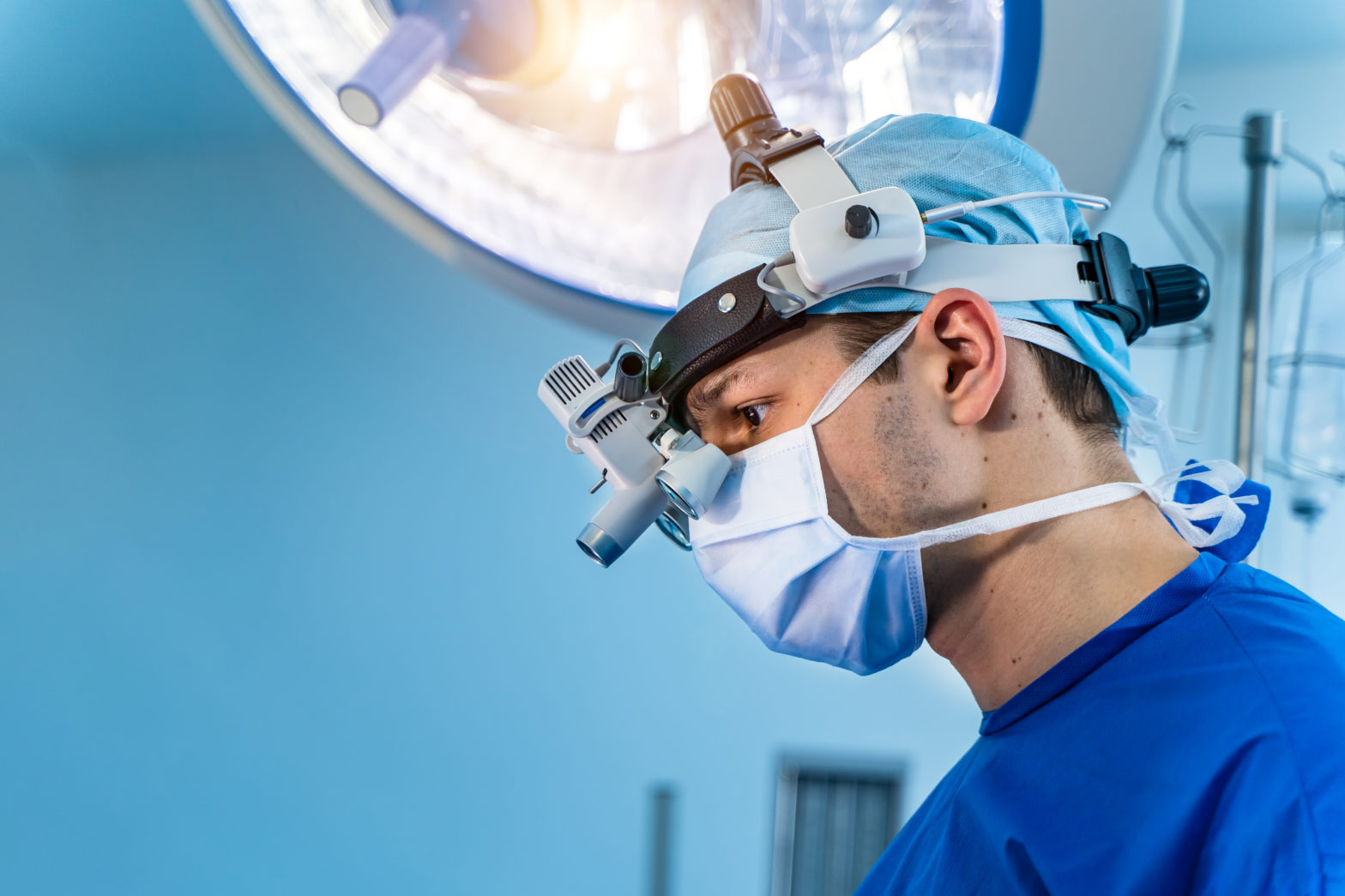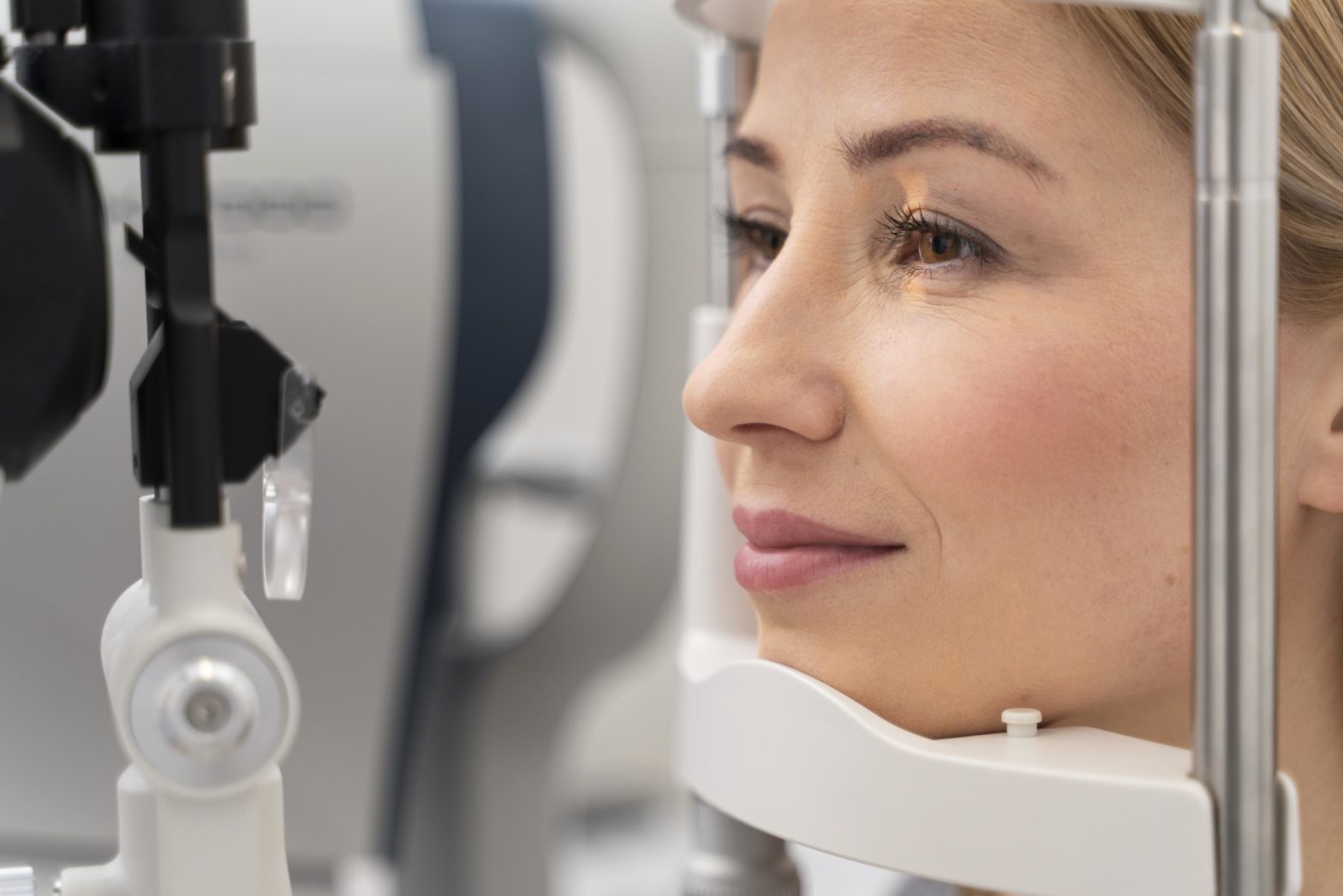- Home
- Treatments
- Refractive Surgery
Refractive Surgery
What is Refractive Surgery?
Refractive surgery is a specialized eye correction surgery designed to correct vision problems by reshaping the cornea or replacing the eye’s natural lens. It provides a long-term solution for individuals with refractive errors such as myopia (nearsightedness), hyperopia (farsightedness), astigmatism, and presbyopia. The goal of refractive surgery is to reduce or eliminate the dependence on glasses or contact lenses, offering patients a significant improvement in their quality of life. With advancements in medical technology, refractive eye surgery has become safer and more precise, allowing patients to achieve near-perfect vision. Whether you suffer from blurry vision, difficulty focusing, or constant dependency on corrective lenses, refractive error treatment through surgery could be a life-changing procedure.
How Does Refractive Surgery Work?
Refractive surgery involves altering the way light is focused on the retina by modifying the eye’s shape. Different surgical techniques are available depending on the patient’s condition, including laser-based procedures like LASIK, PRK, and SMILE, as well as lens-based procedures such as Implantable Collamer Lens (ICL) implantation and refractive lens exchange. Each technique uses cutting-edge technology to ensure precision, reduce healing time, and maximize vision correction. The choice of surgery depends on the patient’s eye condition, prescription, and corneal thickness. Consulting with an experienced ophthalmologist will help determine the best approach for each individual seeking vision correction surgery.
Who is a Good Candidate for Refractive Surgery?
Not everyone is an ideal candidate for refractive correction surgery. To be eligible, a patient must meet the following criteria:
-
Must be at least 18 years old (preferably 21+ for stable vision)
-
Have a stable prescription for at least one year
-
Have a healthy cornea with sufficient thickness
-
Be free from severe eye conditions like keratoconus, glaucoma, or advanced dry eye syndrome
-
Not be pregnant or nursing, as hormonal changes can affect vision
-
Have realistic expectations about the outcomes of the procedure
If you meet these criteria and want to explore options for clear vision without glasses, refractive surgery may be the right choice for you.
Types of Refractive Eye Surgery
Refractive surgery consists of different techniques that cater to various vision correction needs. The most common procedures include:
PRK (Photorefractive Keratectomy) – Benefits & Procedure
PRK is one of the earliest forms of eye refractive surgery. It involves removing the thin outer layer of the cornea (epithelium) and then reshaping the corneal tissue using an excimer laser. Benefits of PRK include suitability for patients with thin corneas, no risk of corneal flap complications, and ideal correction for individuals with active lifestyles. While PRK has a slightly longer recovery period compared to LASIK, it is still a highly effective option for vision correction surgery, particularly for individuals with irregular corneal surfaces.
LASIK Surgery – Flap-Based Eye Correction
LASIK (Laser-Assisted In Situ Keratomileusis) is the most popular form of refractive surgery. It involves creating a thin corneal flap using a microkeratome or femtosecond laser, reshaping the underlying tissue with an excimer laser, and repositioning the flap. Advantages of LASIK include quick recovery time with minimal discomfort, immediate improvement in vision, and a high success rate with long-term stability.
Refractive Lenticule Extraction – ReLEx SMILE / FLEX
SMILE (Small Incision Lenticule Extraction) and FLEX (Femtosecond Lenticule Extraction) are minimally invasive laser procedures that involve removing a tiny lenticule from the cornea. Key benefits of these procedures include no flap creation, reducing the risk of flap-related issues, faster healing and lower risk of dry eye syndrome, and suitability for individuals with high myopia. SMILE is particularly beneficial for individuals looking for a flapless, minimally invasive procedure with fast recovery and minimal postoperative discomfort.
Lens-Based Refractive Surgeries
For patients who are not candidates for laser-based procedures, lens-based surgeries offer an alternative.
Implantable Collamer Lens (ICL) – An Alternative to LASIK
ICL surgery involves implanting a biocompatible lens inside the eye, providing permanent vision correction without reshaping the cornea. It is ideal for patients with thin corneas or extreme refractive errors, individuals seeking a reversible procedure, and those with dry eye concerns. ICL is gaining popularity as an excellent alternative to LASIK, offering superior vision quality and reversibility if needed.
Refractive Lens Exchange – Best for Presbyopia & High Refractive Errors
Refractive Lens Exchange (RLE) replaces the natural lens with an artificial intraocular lens (IOL), correcting vision while also preventing cataract formation in the future. It is especially beneficial for:
- Older individuals experiencing presbyopia
- Those with extreme hyperopia
Benefits & Risks of Refractive Surgery
Benefits
- Permanent correction of vision
- Improved quality of life with reduced dependency on glasses and contact lenses
- High success rate with rapid recovery
- Customizable solutions for different eye conditions
Risks
- Temporary discomfort and dry eyes post-surgery
- Potential for glare, halos, or night vision disturbances
- Rare complications like under-correction, over-correction, or flap-related issues
Refractive Surgery Recovery & Post-Procedure Care
Post-surgical care is crucial for optimal recovery and best results. Here are key aftercare tips:
-
Avoid rubbing the eyes for at least two weeks
-
Use prescribed eye drops to prevent dryness and infection
-
Wear protective eyewear, especially in bright environments
-
Avoid swimming and heavy physical activity for a few weeks
-
Attend follow-up checkups to monitor healing
Cost of Refractive Surgery in India
The cost of refractive surgery in India varies based on the procedure, clinic location, and surgeon expertise. On average:
-
LASIK: ₹25,000 – ₹60,000 per eye
-
PRK: ₹20,000 – ₹50,000 per eye
-
SMILE: ₹60,000 – ₹1,00,000 per eye
-
ICL: ₹80,000 – ₹1,50,000 per eye
-
RLE: ₹80,000 – ₹2,00,000 per eye
Many eye hospitals offer EMI options and insurance coverage for specific procedures.
Frequently Asked Questions (FAQs) about Refractive Surgery
What is refractive eye surgery?
Refractive eye surgery is a vision correction procedure that aims to reduce or eliminate the dependency on glasses or contact lenses by reshaping the cornea or replacing the natural lens of the eye. It is used to treat common refractive errors, including nearsightedness (myopia), farsightedness (hyperopia), astigmatism, and presbyopia. Advanced laser techniques like LASIK, PRK, SMILE, and lens-based procedures such as Implantable Collamer Lens (ICL) implantation and Refractive Lens Exchange (RLE) offer effective solutions for long-term vision improvement.
Who is eligible for refractive surgery?
Individuals who are at least 18 years old and have had a stable vision prescription for at least one year are typically considered eligible for refractive surgery. Candidates should have healthy corneas with sufficient thickness and should not have severe dry eyes, glaucoma, or other eye diseases that may interfere with healing. Those who are pregnant or nursing may be advised to postpone the procedure due to hormonal fluctuations that can affect vision stability. An ophthalmologist will conduct a comprehensive eye examination to determine whether a person meets the required criteria for refractive surgery.
What are the different types of refractive surgery?
There are several types of refractive eye surgeries available, each designed to correct vision issues through different methods. LASIK, one of the most common procedures, involves creating a flap on the cornea and reshaping the underlying tissue using a laser. PRK, a flap-free technique, removes the outer corneal layer before laser correction, making it suitable for individuals with thinner corneas. SMILE, a minimally invasive procedure, removes a small lenticule from the cornea through a tiny incision, offering a fast recovery with fewer complications. For individuals who are not suitable candidates for laser-based treatments, lens-based surgeries like ICL implantation or RLE provide an alternative by implanting an artificial lens inside the eye to improve vision.
How long does refractive surgery take?
Refractive surgery is a quick and efficient procedure, usually completed within 10 to 20 minutes per eye. The laser portion of surgeries like LASIK and SMILE takes only a few seconds to complete, while the preparation and post-procedure assessments extend the total time spent in the clinic to a couple of hours. Despite the short duration, the precision of modern laser technology ensures highly accurate vision correction with minimal discomfort.
Is refractive surgery painful?
Refractive surgery is generally painless, as numbing eye drops are applied before the procedure to prevent any discomfort. While patients may feel mild pressure or a slight sensation during the surgery, pain is not typically experienced. After the procedure, some individuals may notice temporary irritation, dryness, or mild discomfort, especially in procedures like PRK, where the outer corneal layer takes time to regenerate. These symptoms usually subside within a few days with the use of prescribed eye drops and protective measures.
How long does it take to recover from refractive surgery?
Recovery from refractive surgery varies depending on the procedure performed. LASIK patients typically notice a significant improvement in vision within 24 to 48 hours, with minor fluctuations for a few weeks. PRK has a longer recovery time, with initial healing taking three to five days and full visual clarity developing over several weeks. SMILE offers a relatively quick recovery, with vision stabilizing within a few days to a week. ICL surgery patients generally experience clear vision within a few days, as it does not involve corneal reshaping. Post-operative care, including regular check-ups, avoiding eye strain, and following the doctor’s instructions, plays a crucial role in ensuring a smooth recovery and the best possible visual outcome.

Do not ignore eye trouble!
Now you can reach our senior doctors by booking an online video consultation or a hospital appointment
Book an appointment now







